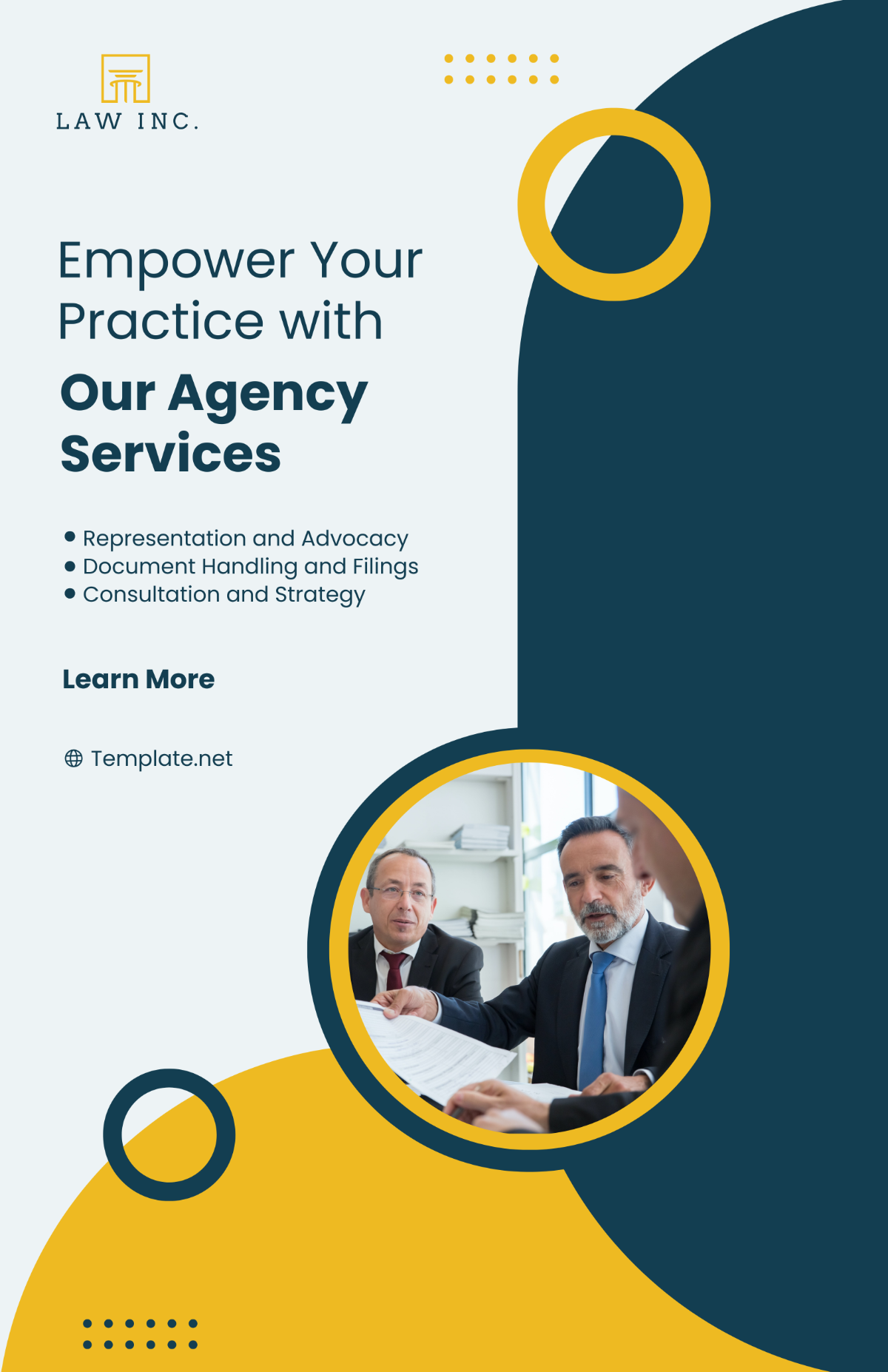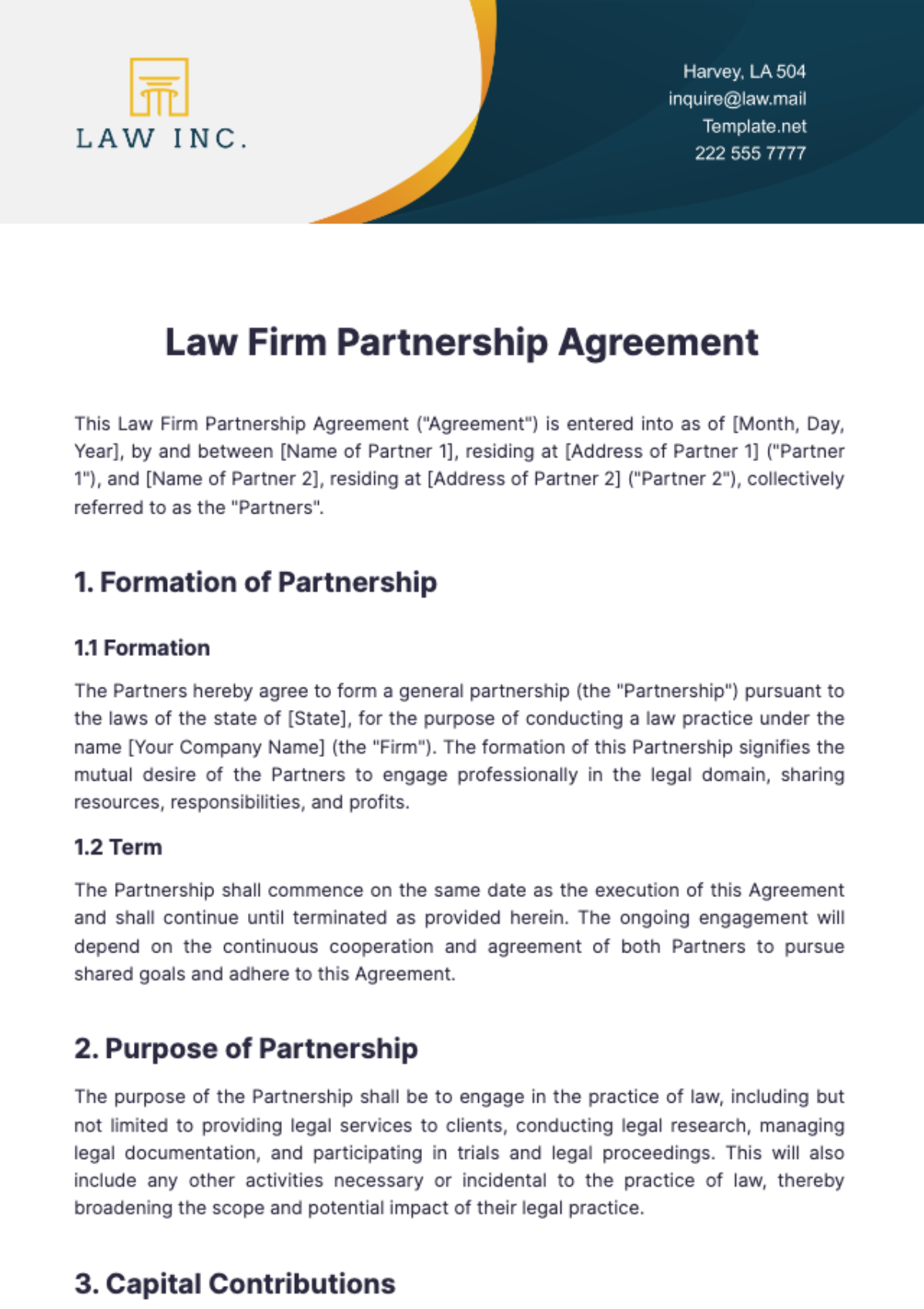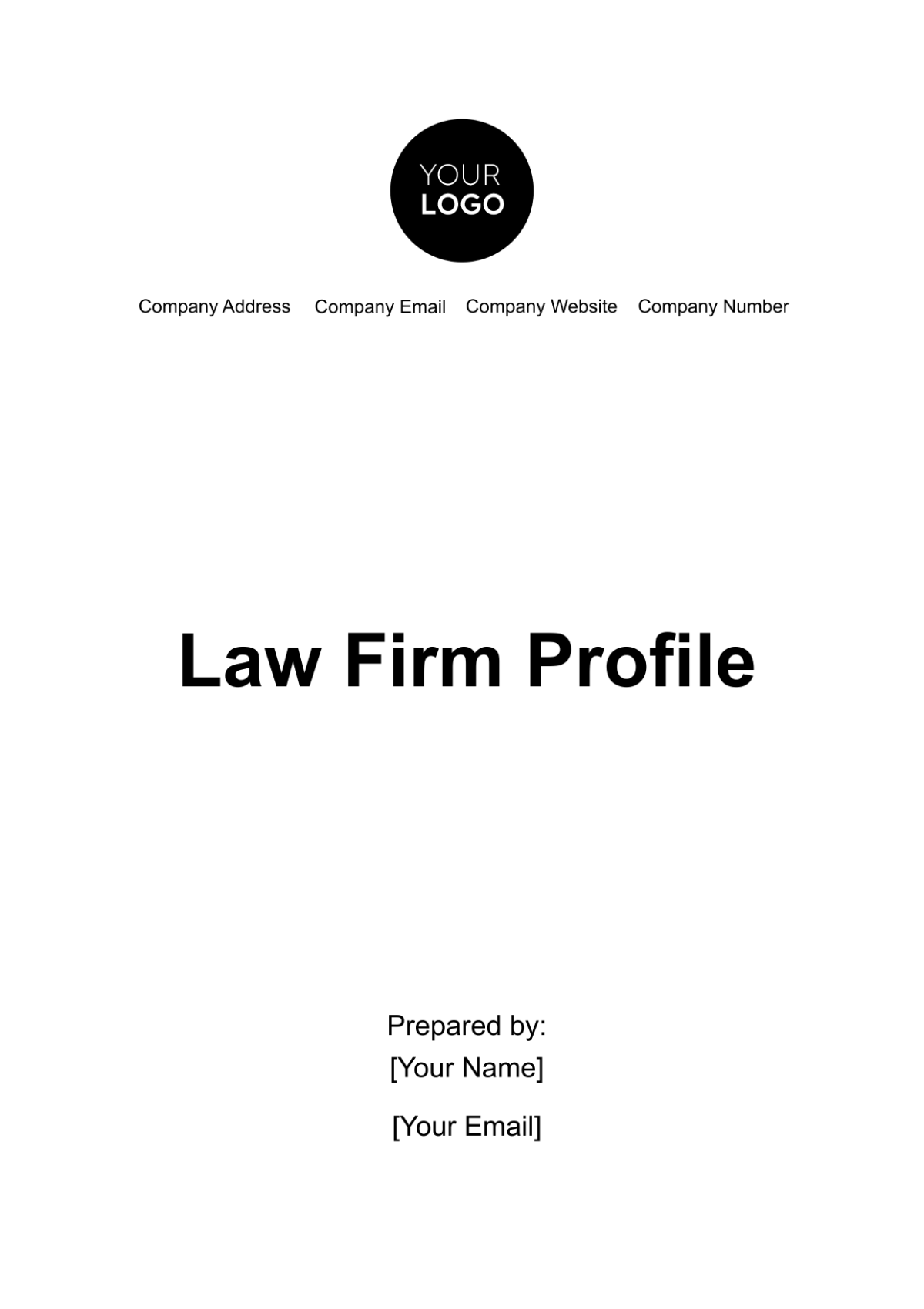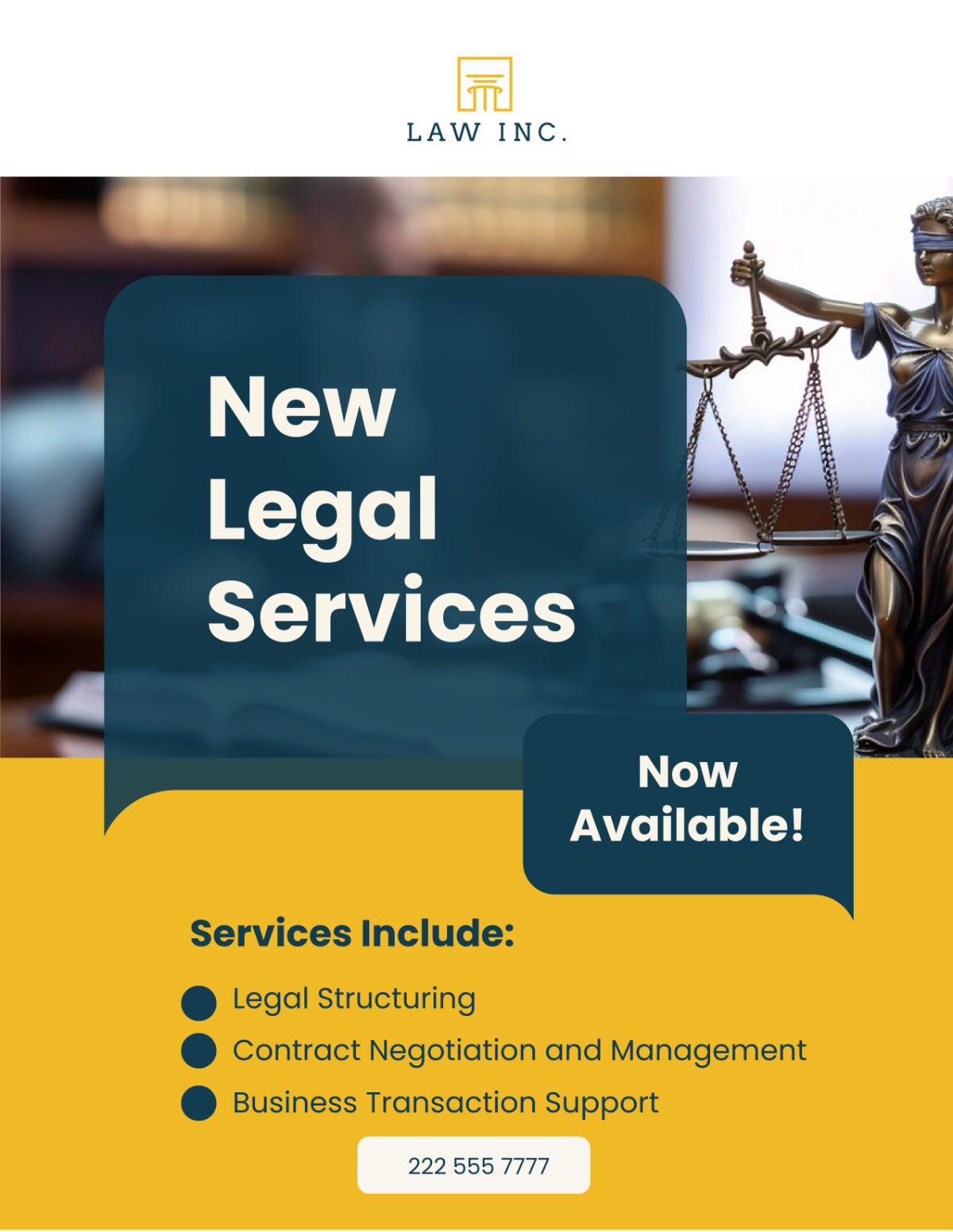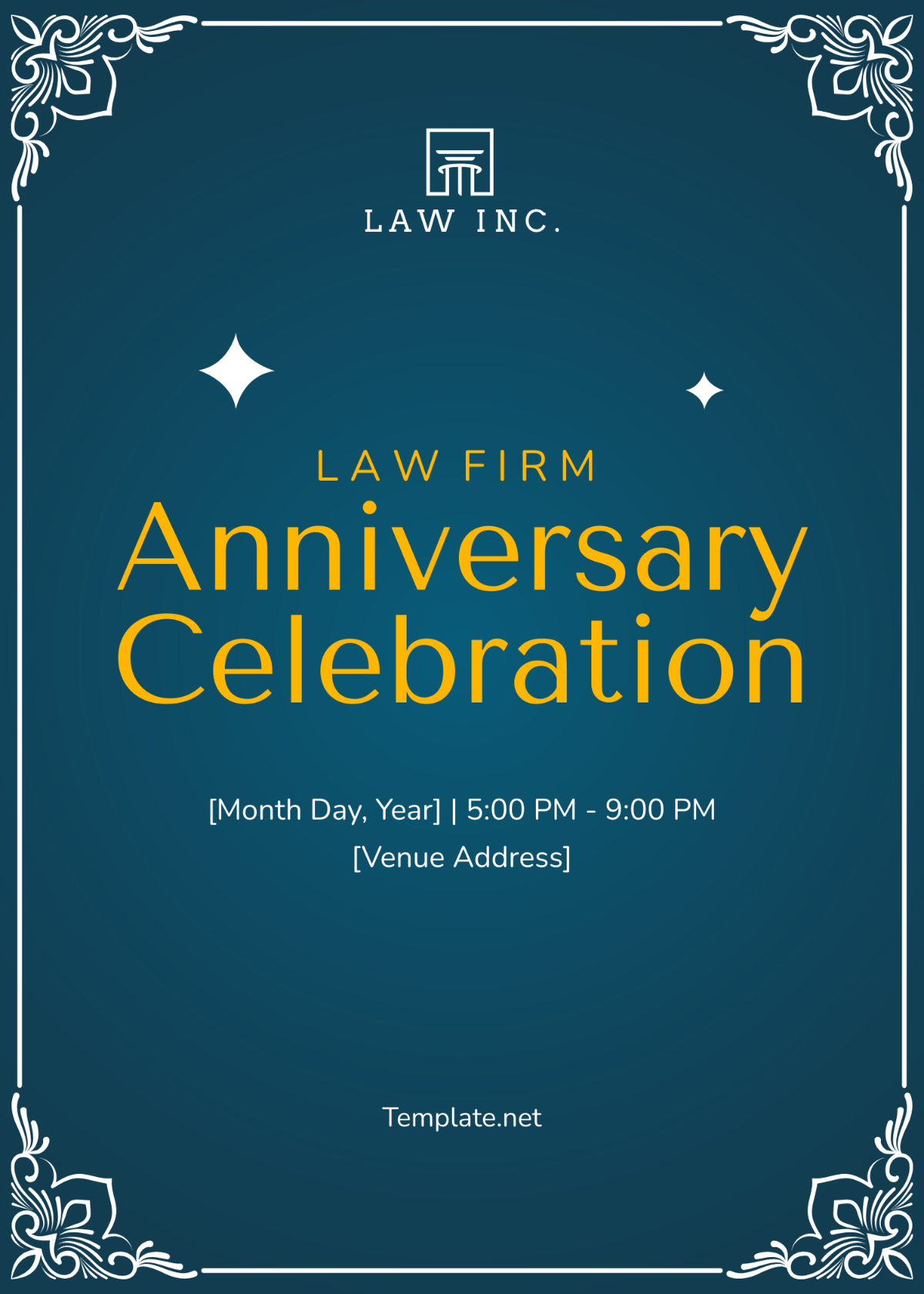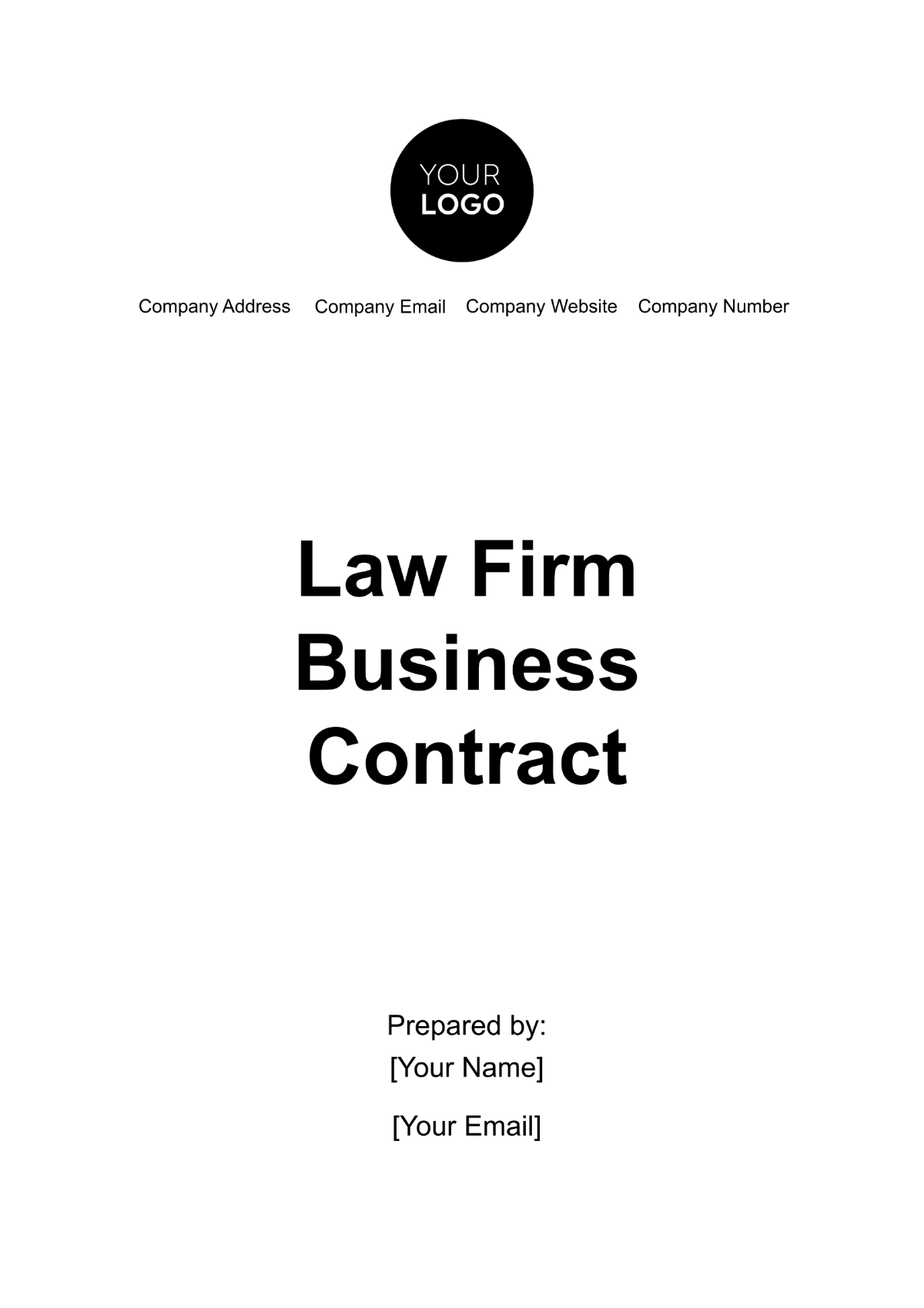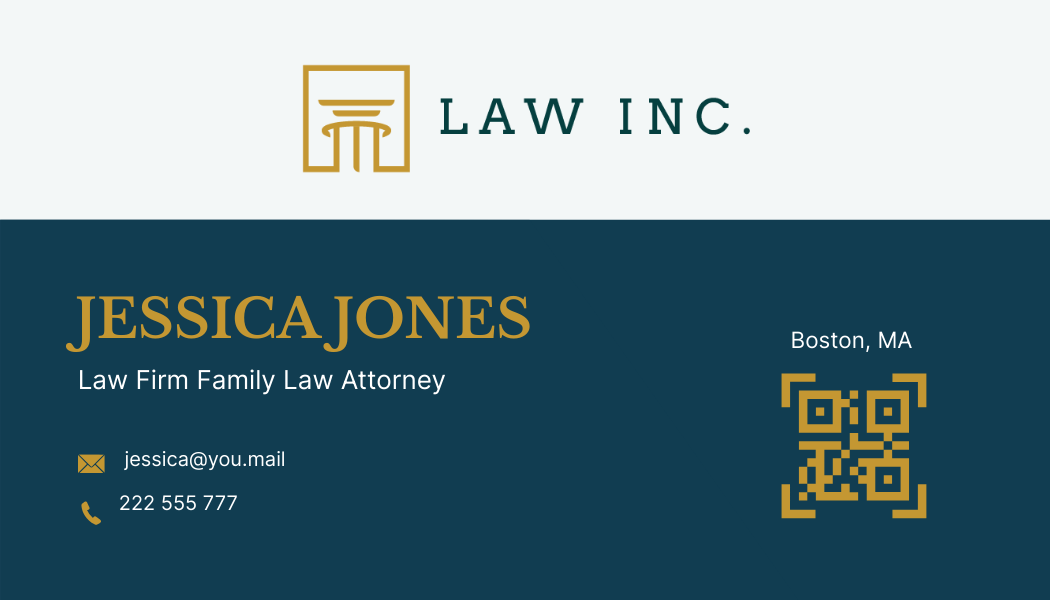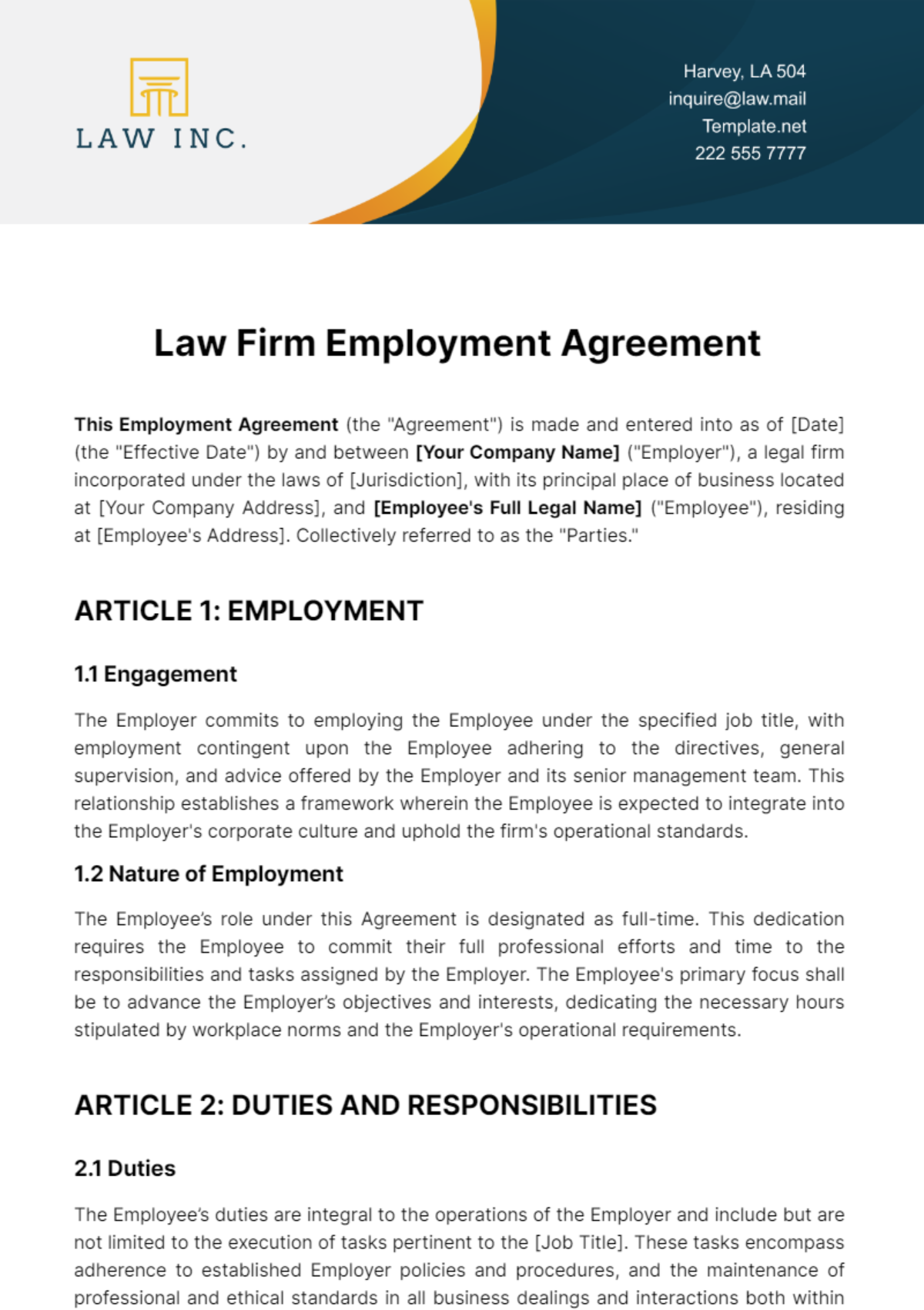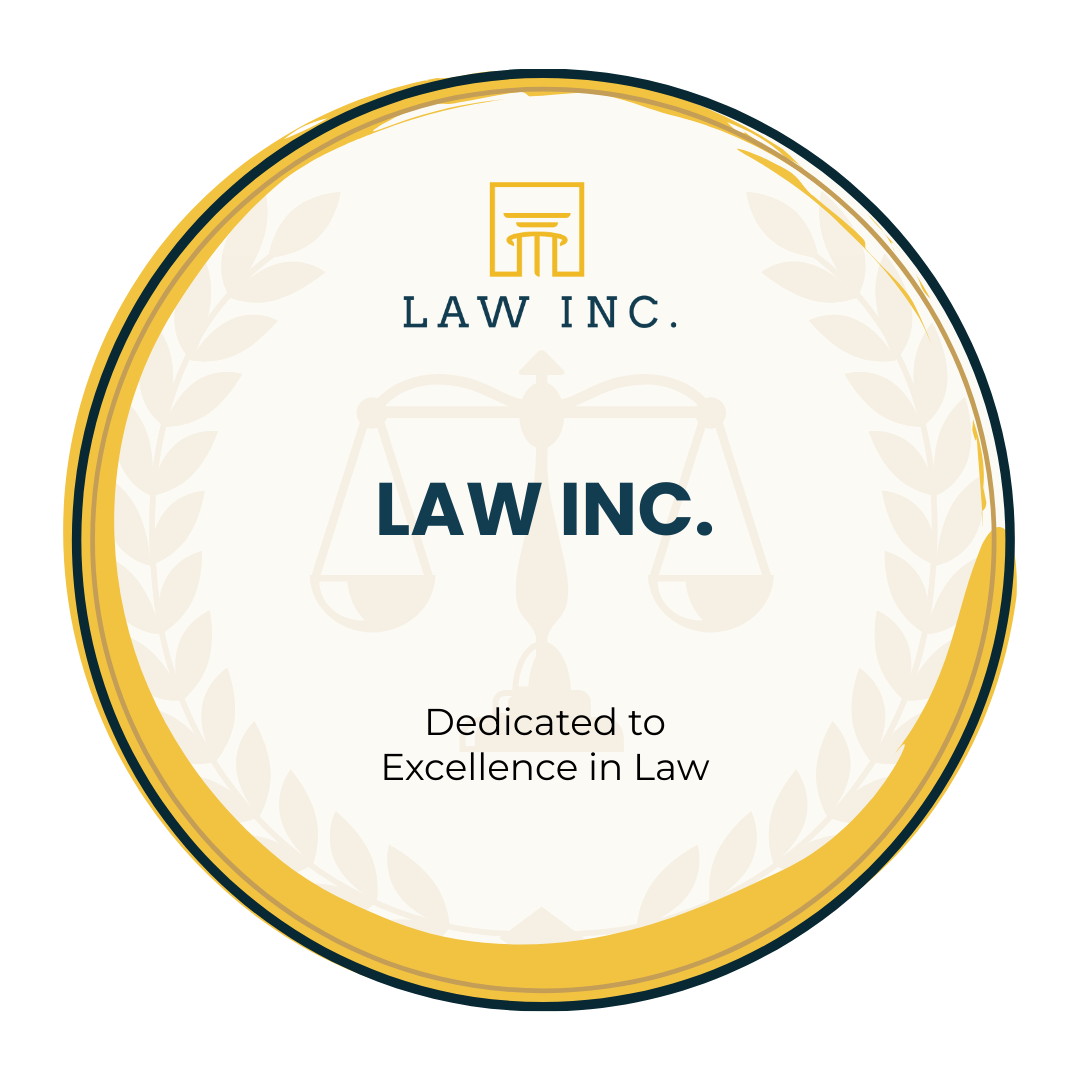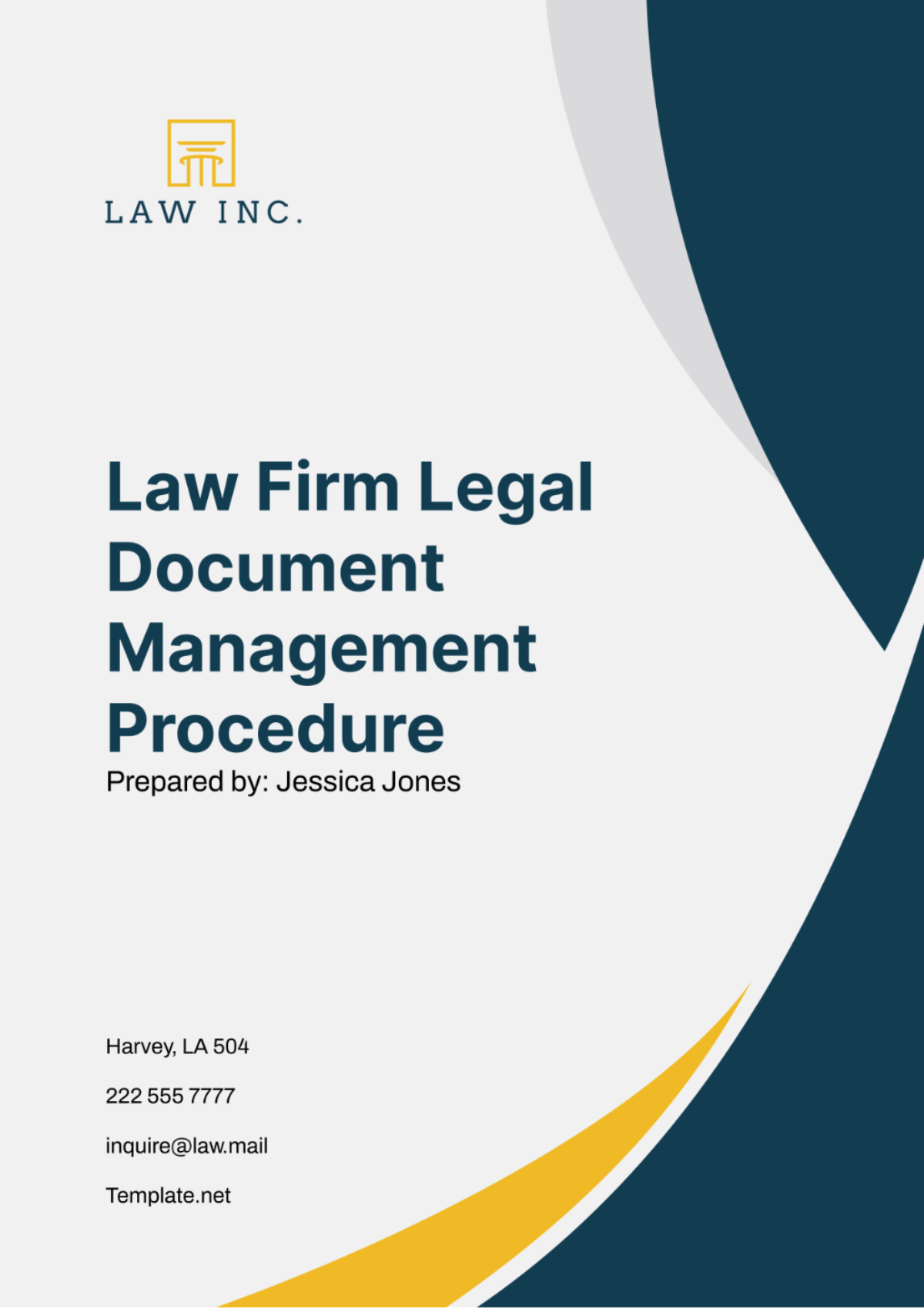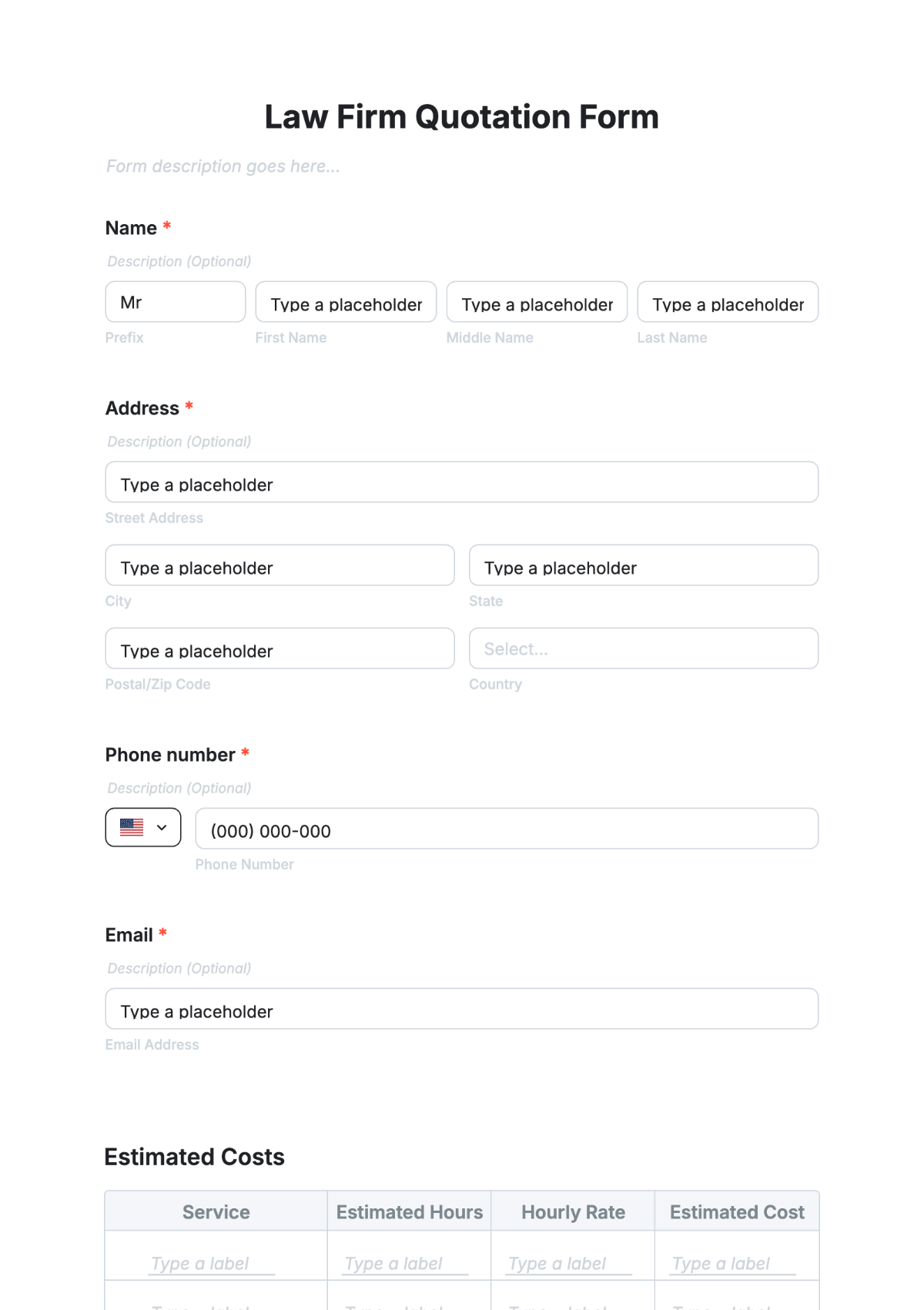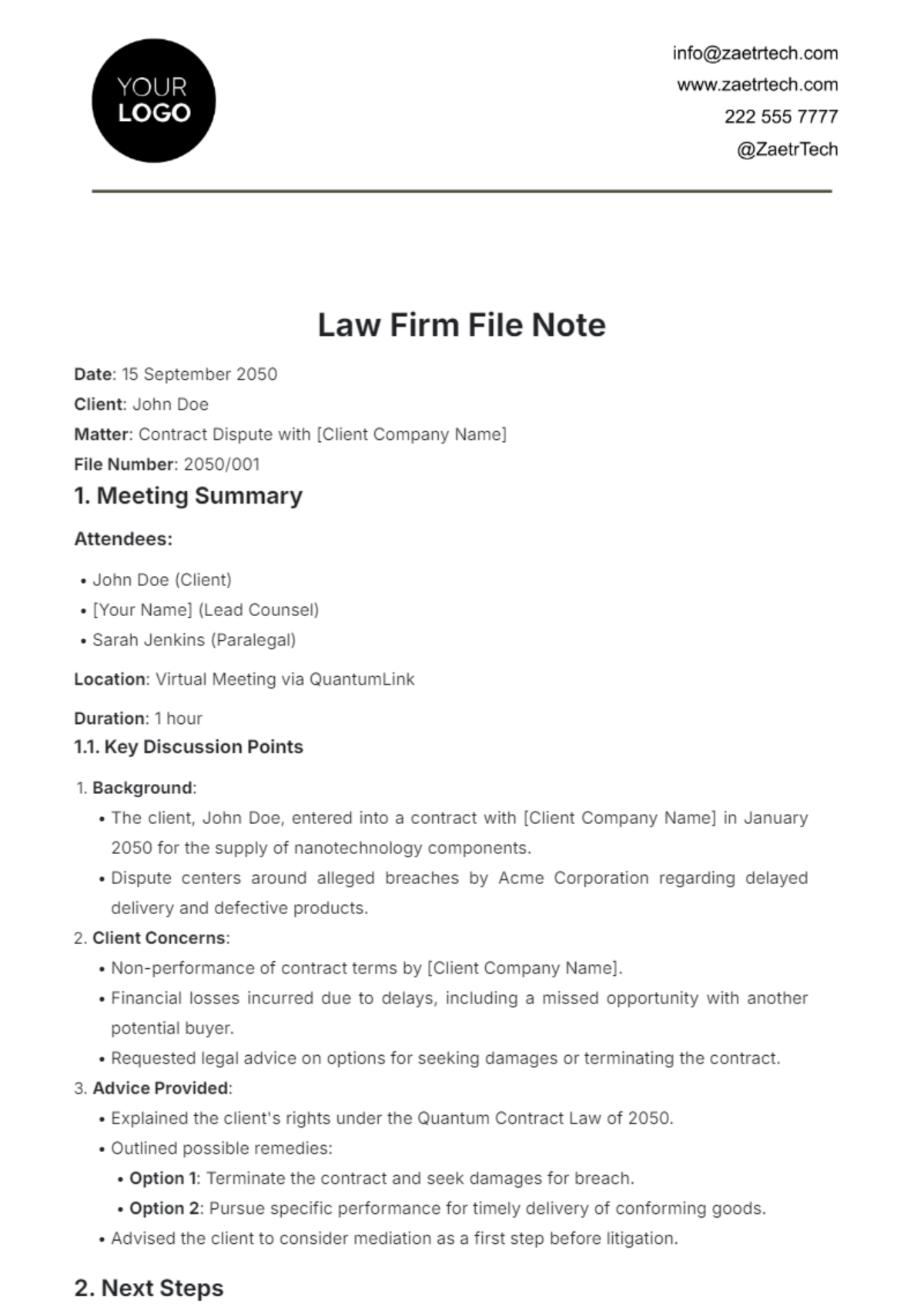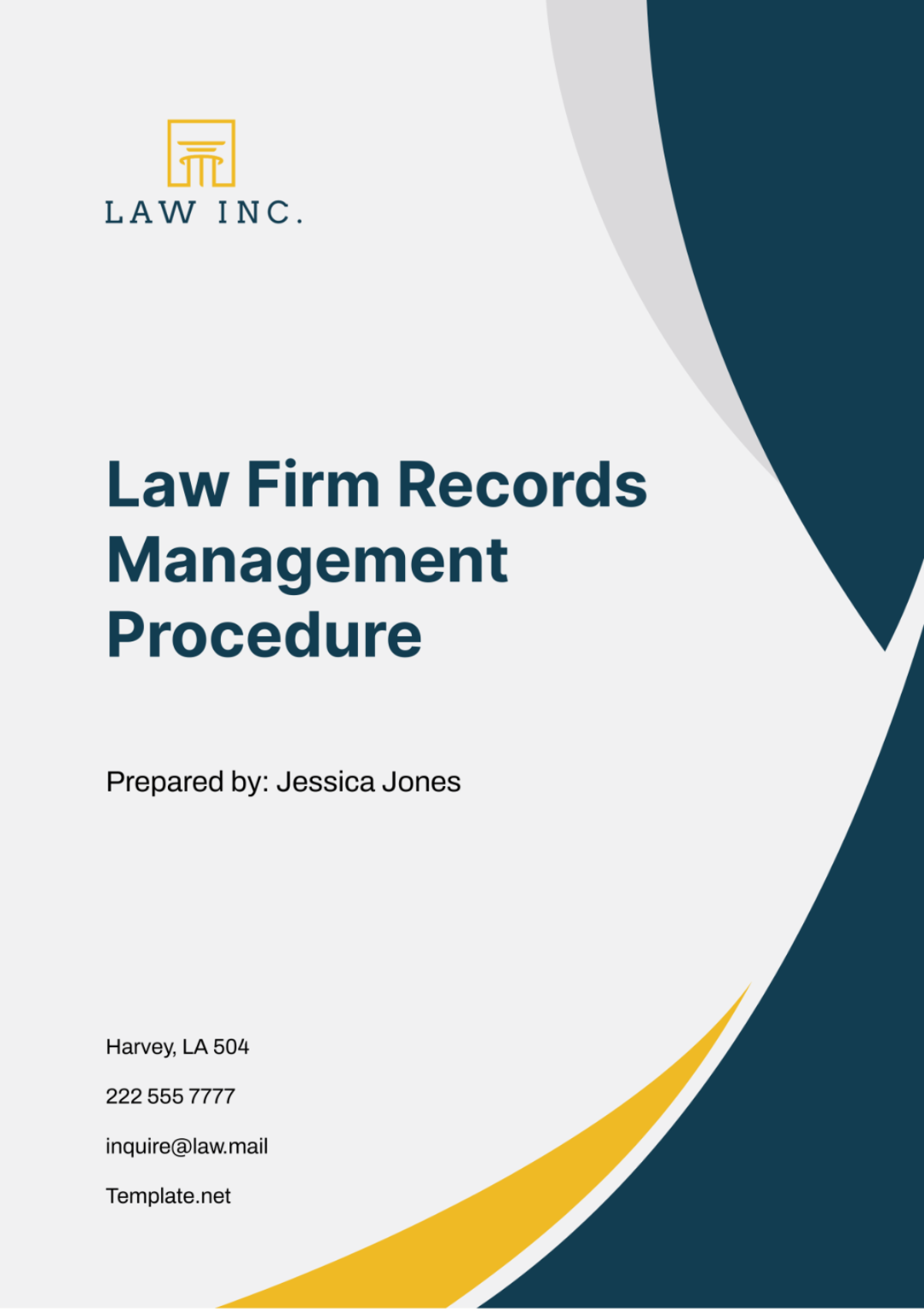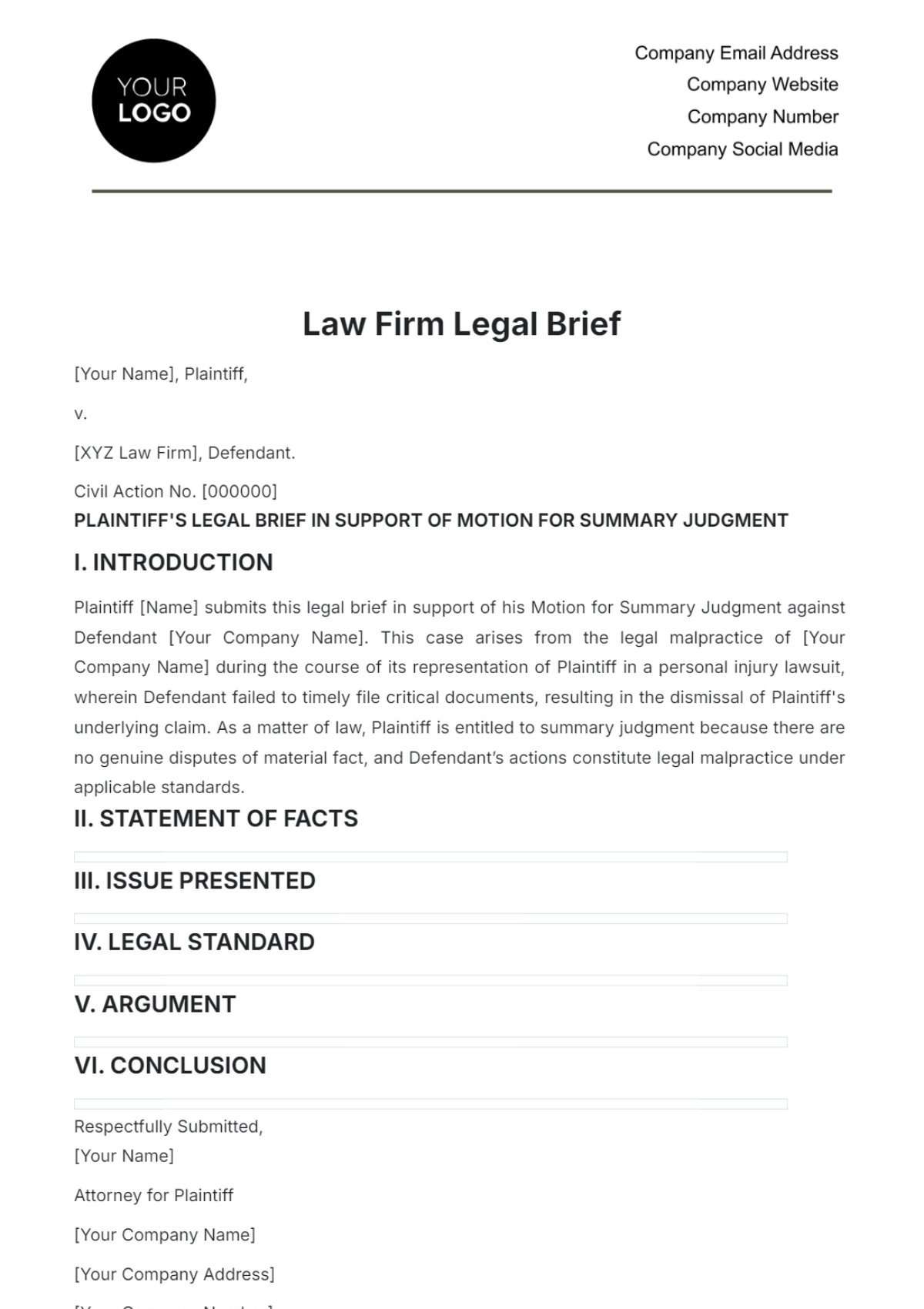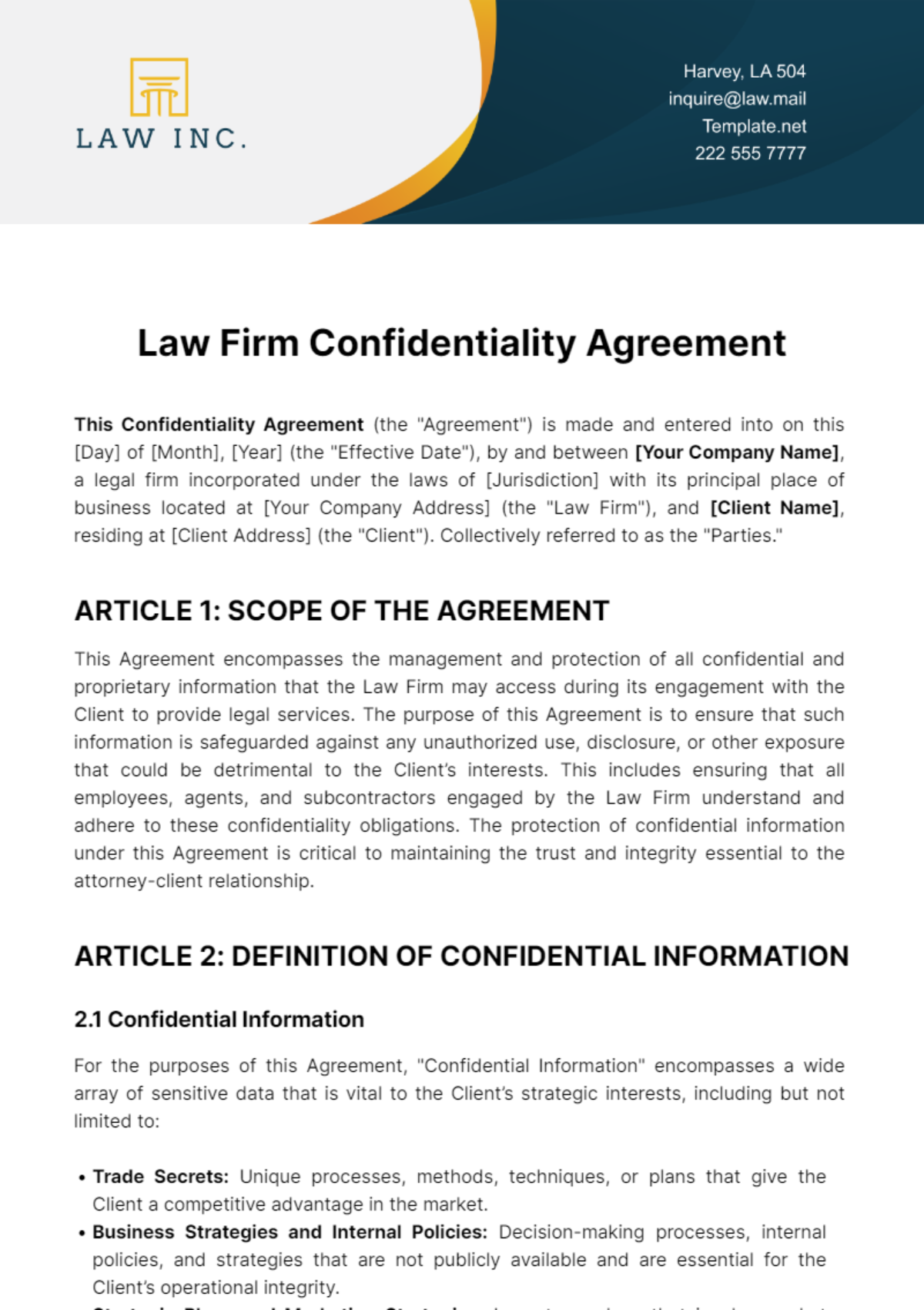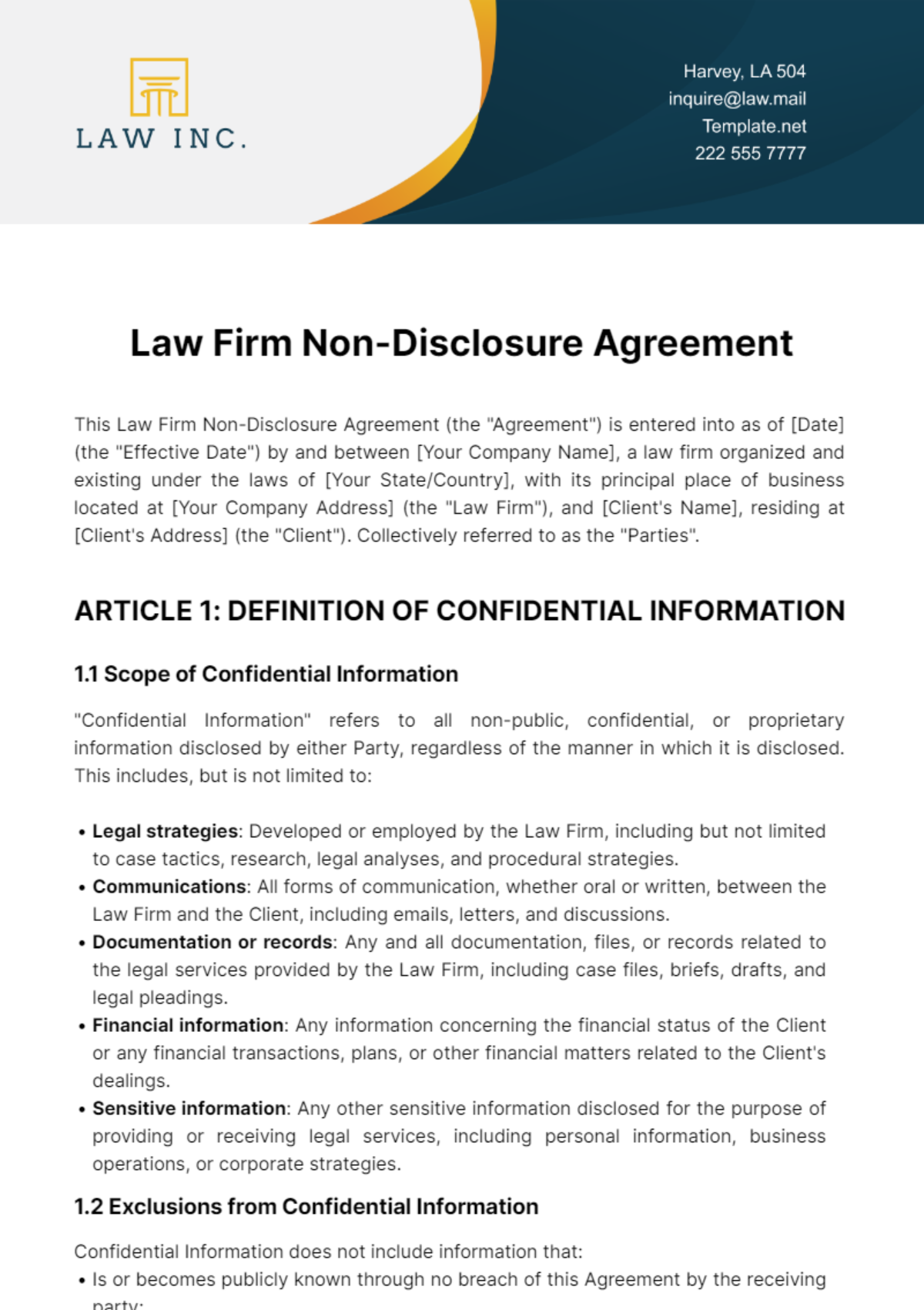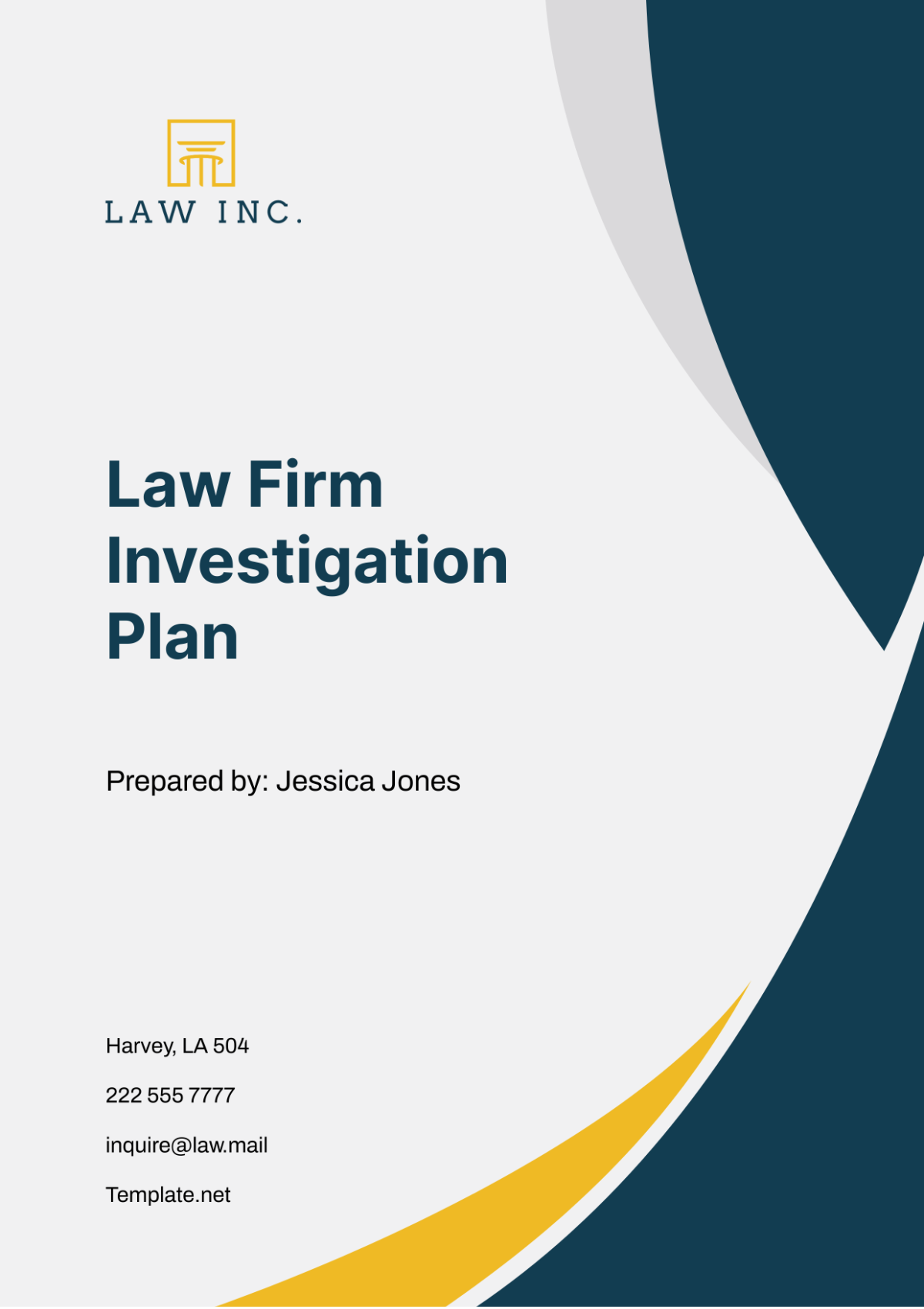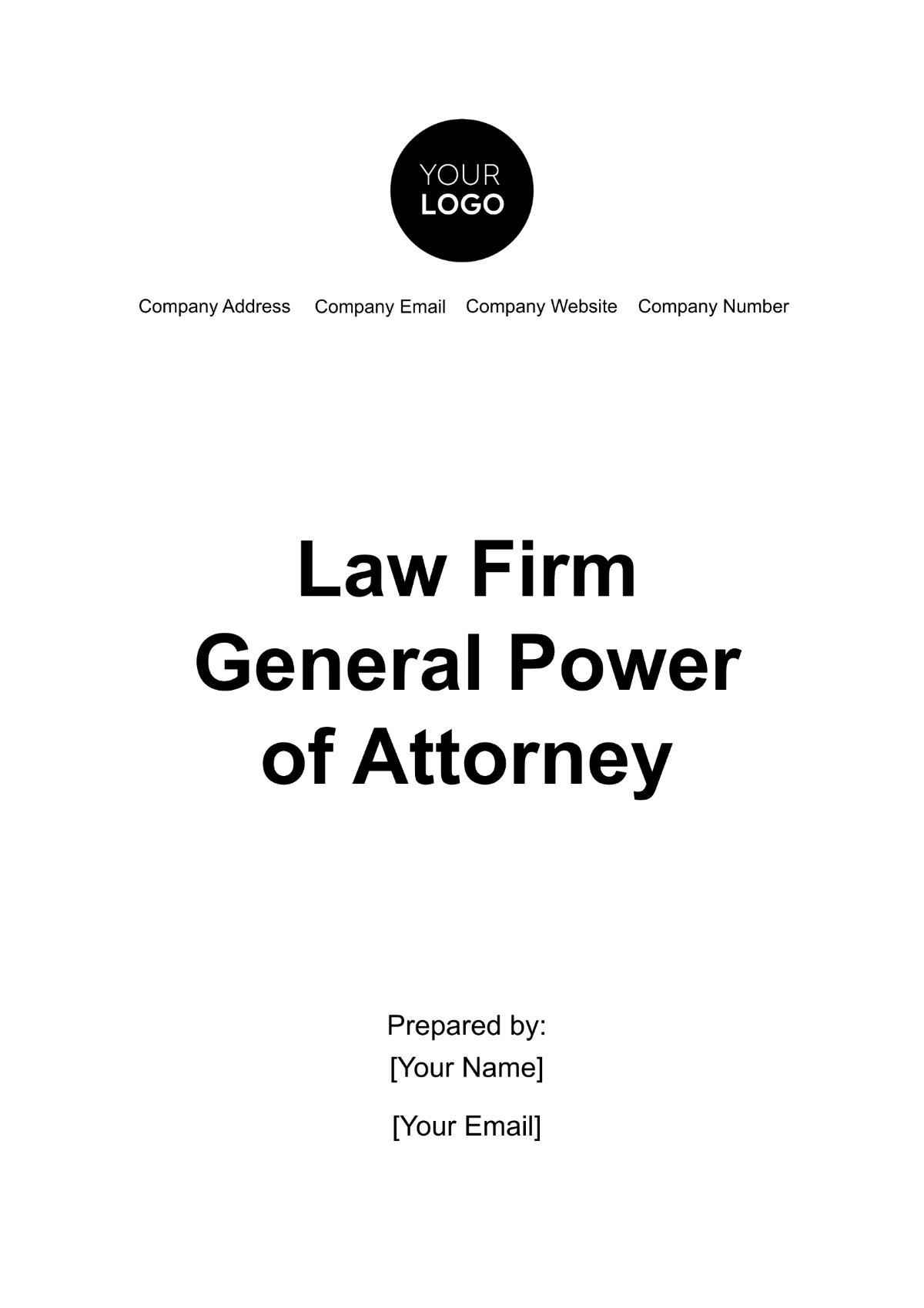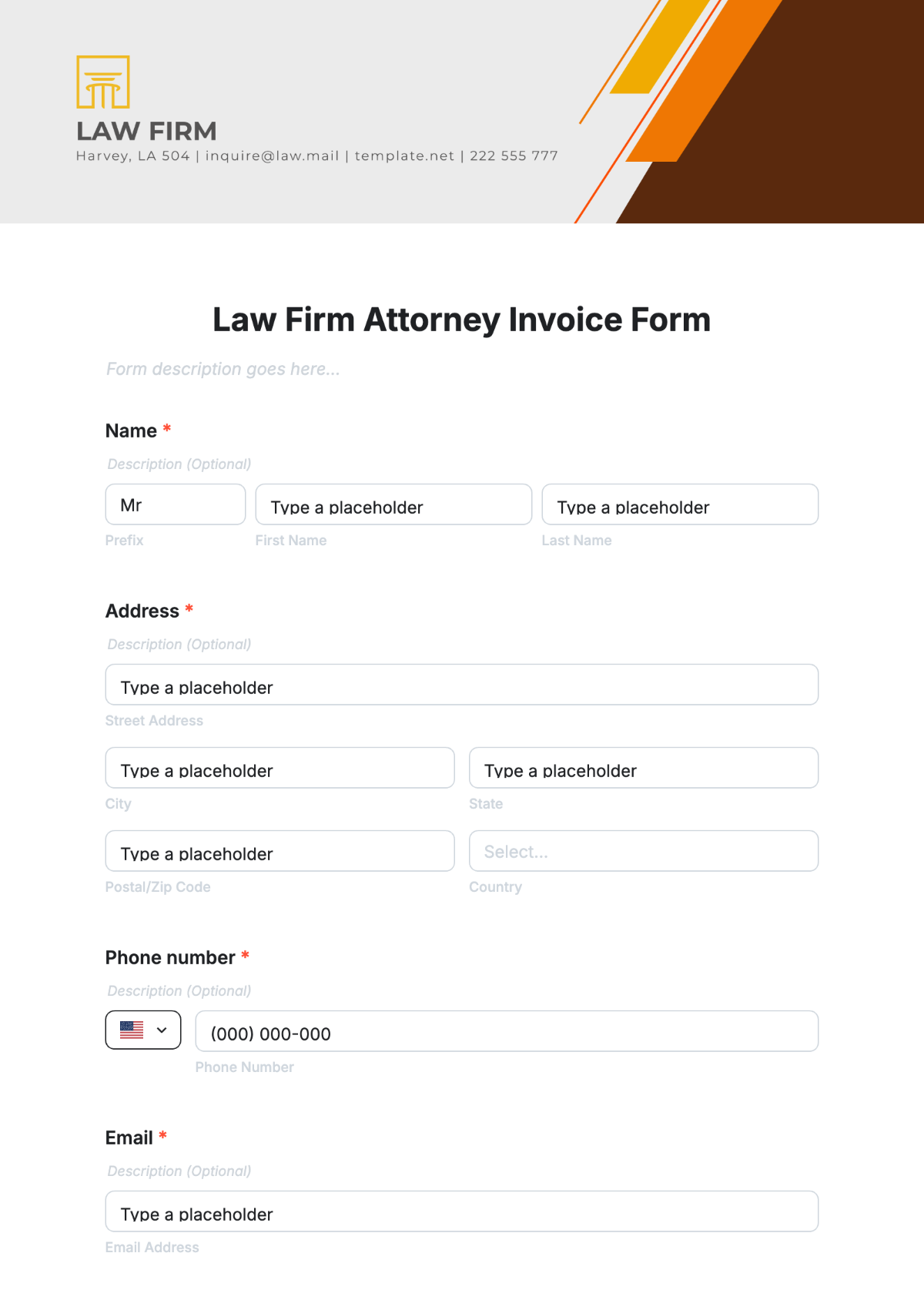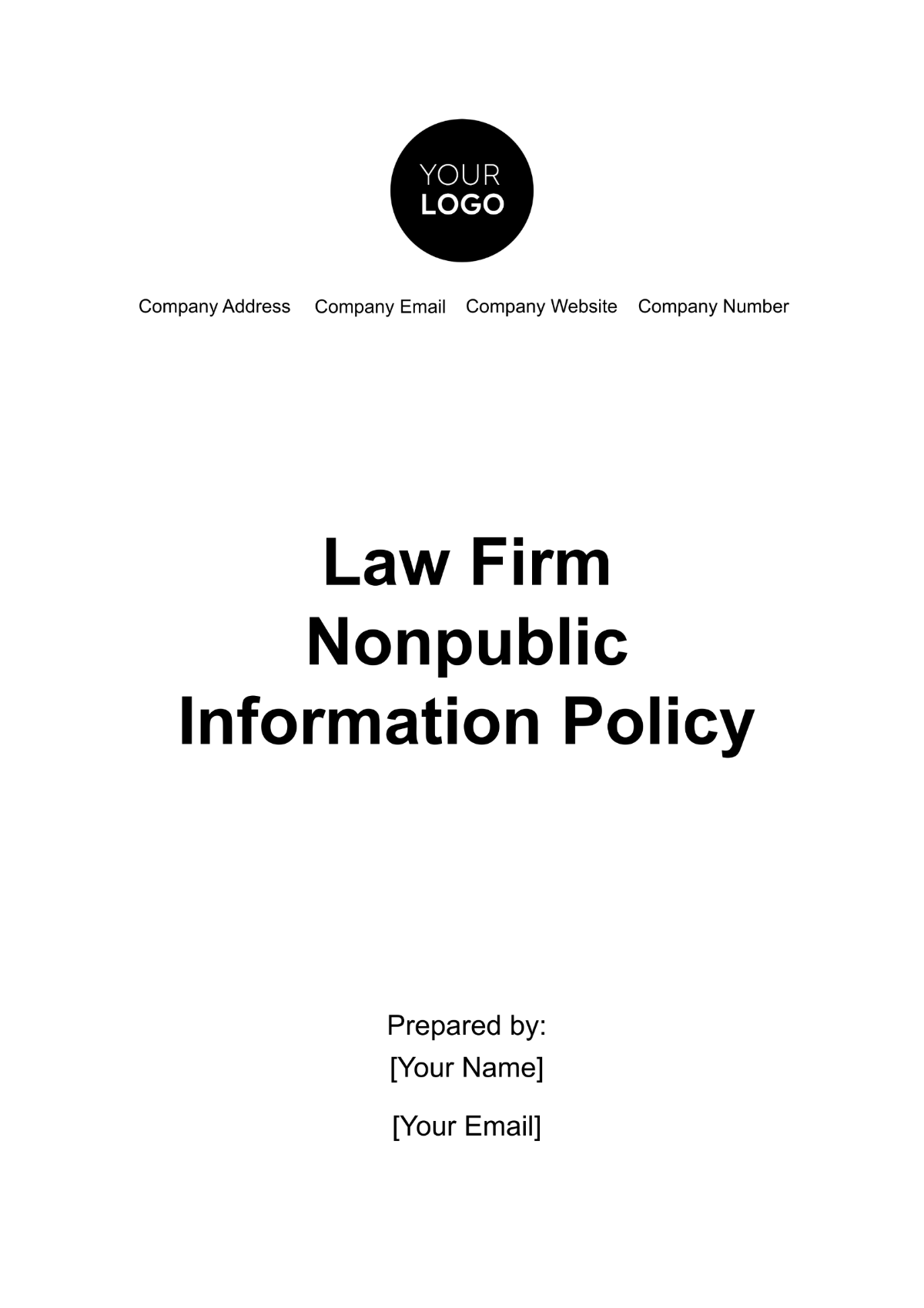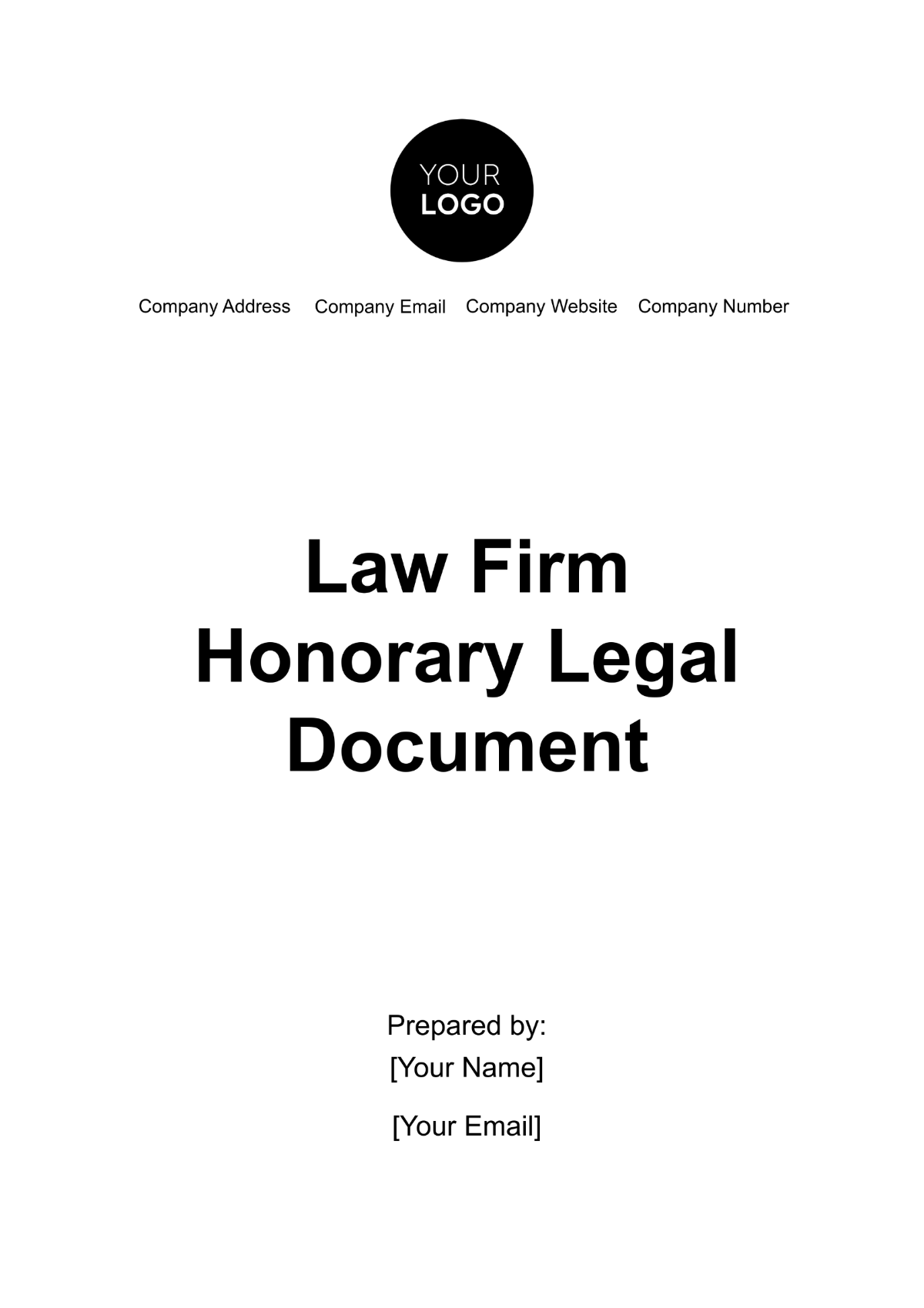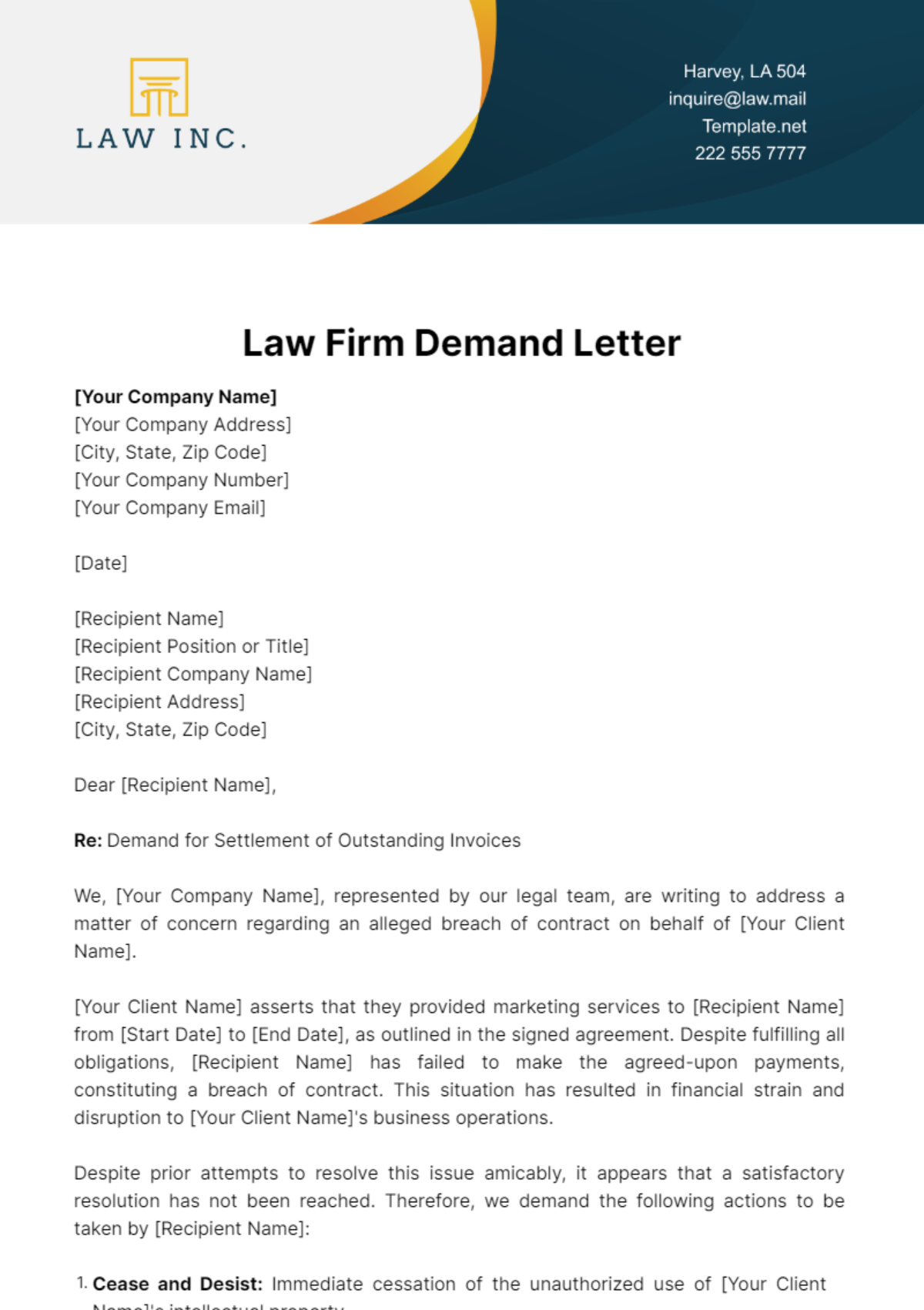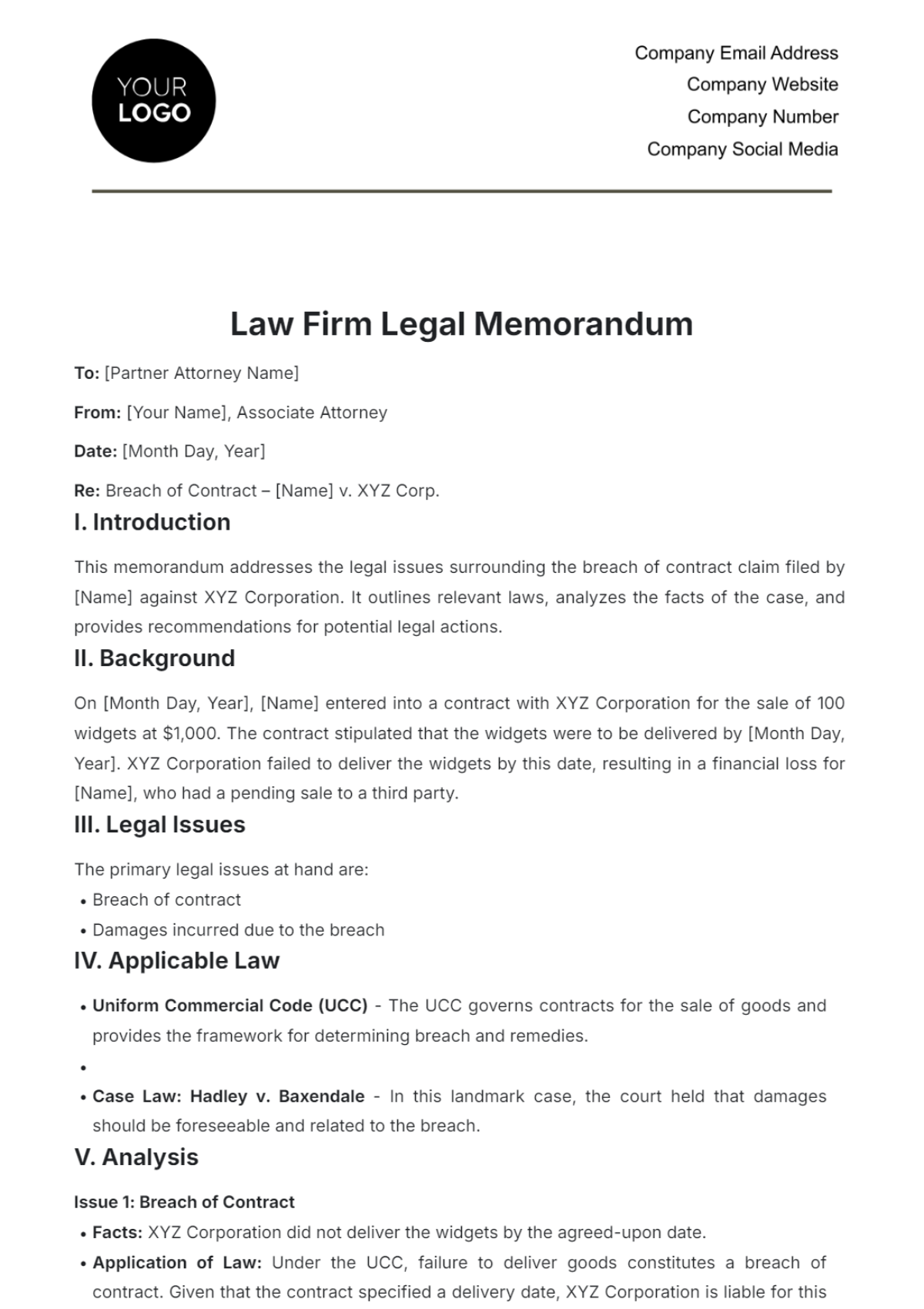Law Firm Records Management Procedure
1. Introduction
Purpose
The purpose of this Records Management Procedure (RMP) is to ensure that all records generated by [Your Company Name] are managed according to legal and ethical standards, preserved, accessed, and disposed of systematically. The RMP aims to safeguard sensitive information, optimize business operations, and ensure compliance with applicable legal and regulatory requirements.
Scope
This procedure applies to all records created, received, maintained, and destroyed by [Your Company Name], encompassing both electronic and physical formats. These records include but are not limited to client case files, correspondence, employee records, and financial documentation.
Responsibility
The responsibility for managing these records lies with the Records Management Officer (RMO), supported by departmental records coordinators. All employees are responsible for adhering to the RMP as part of their daily operations.
2. Legal and Regulatory Compliance
At [Your Company Name], adherence to legal and regulatory standards is crucial. The firm is governed by a variety of laws and regulations, including the General Data Protection Regulation (GDPR), the Health Insurance Portability and Accountability Act (HIPAA), and the Sarbanes-Oxley Act, each requiring strict management of certain types of records. Compliance is ensured through several comprehensive strategies:
Annual Legal Audits: Conducted by external consultants to verify adherence to all applicable regulations and to identify any changes in legal standards that may affect our practices.
Compliance Training: All employees undergo mandatory annual training tailored to their specific roles, ensuring they are aware of and understand the legal obligations relevant to their functions.
Documented Compliance Procedures: These procedures outline the steps and measures taken to protect sensitive information and ensure legal compliance across all departments.
3. Record Classification
Categories
Records at [Your Company Name] are classified into three primary categories as shown below:
Category | Description | Examples |
|---|---|---|
Administrative | Records relating to daily operations and management of the firm. | Employee records, policy documents, and internal communications. |
Client-related | Records directly associated with client services and cases. | Case files, correspondence, court documents, contracts. |
Financial | Records concerning the financial operations of the firm. | Invoices, receipts, bank statements, audit reports. |
Criteria
The classification of records is based on their content, purpose, and level of confidentiality required. The RMO, together with department heads, will review and classify new types of records within one month of their creation.
4. Record Retention Schedule
Retention Periods
Each record type has a defined retention period based on legal requirements and business needs. These are documented in the Record Retention Schedule, maintained by the RMO and reviewed annually. A sample excerpt from the Retention Schedule is presented below:
Record Type | Retention Period | Reason for Period |
|---|---|---|
Client Case Files | 7 years after case closure | Legal requirement and potential for appeals |
Employee Records | 5 years post-employment | Labor laws and future references |
Financial Documents | 10 years | Tax regulations and auditing purposes |
Review and Destruction Policy
Following the expiration of the retention period, records are reviewed and confidentially destroyed if no longer needed. Destruction methods include shredding for physical records and secure erasure for electronic files, with all actions logged by the RMO.
5. Record Storage and Security
Securing and appropriately storing records is vital to protecting the integrity and confidentiality of client and firm data at [Your Company Name]. Our approach involves:
Physical Storage Solutions: We utilize locked, fireproof filing cabinets located in secure areas with limited access to store physical records. The premises are monitored with 24/7 CCTV surveillance, and access to sensitive areas is controlled through a key card system that logs entries and exits.
Digital Storage Solutions: Digital records are stored on encrypted servers within secure facilities. Access to these records is highly regulated and requires multi-factor authentication. Regular IT security audits are conducted to ensure the robustness of our digital defenses.
Access Control Policies: Access to both physical and digital records is strictly controlled based on the principle of least privilege, where staff members are only granted access to information that is necessary for their job functions. These permissions are regularly reviewed and adjusted in response to role changes or departures.
6. Record Tracking and Audit Trails
To maintain a high level of accountability and traceability, [Your Company Name] employs advanced record-tracking systems and audit trails:
Tracking System Implementation: Each record is tagged with a unique identifier, which is tracked through its lifecycle from creation to destruction. This system is particularly crucial for client files, financial documents, and sensitive internal communications.
Audit Trails: Our electronic document management system (EDMS) automatically generates detailed logs of all operations performed on records, including access, modification, and deletion. These logs are immutable to prevent tampering and are reviewed periodically to ensure compliance and identify potential irregularities.
7. Disaster Recovery and Backup Procedures
The ability to recover from data loss is critical for the continuity of operations at [Your Company Name]. Our disaster recovery and backup strategies include:
Backup Schedule: We implement a tiered backup protocol, which includes daily incremental backups and full weekly backups, with all data being encrypted and stored off-site.
Recovery Plans: Our comprehensive disaster recovery plan outlines the immediate steps to be taken in the event of a data breach or physical damage to our facilities, ensuring minimal disruption to our services and quick restoration of data.
8. Training and Awareness
Ensuring that all employees are aware of and proficient in records management practices is a priority:
Training Programs: These are designed to inform and educate employees about their roles and responsibilities regarding records management, including handling, storage, and disposal of sensitive information.
Ongoing Updates and Refresher Courses: Employees receive regular updates through e-learning modules and quarterly newsletters, which cover changes in policies, legal requirements, and best practices.
9. Monitoring and Review
To ensure the effectiveness and continual improvement of our records management system, [Your Company Name] employs a structured approach to monitoring and review. This section includes both internal and external audits and emphasizes a culture of continuous improvement.
Internal and External Audits
Internal Audits: Conducted bi-annually to assess adherence to established records management protocols and to identify areas where improvements can be made. These audits are primarily focused on compliance with internal standards and operational efficiency.
External Audits: Annual audits conducted by independent auditors to ensure compliance with external legal and regulatory requirements. These audits are more formal and help maintain credibility with external stakeholders.
Audit Focus Areas and Schedules
Focus Area | Internal Audit | External Audit |
|---|---|---|
Compliance with Laws and Regulations | Bi-annually | Annually |
Security of Record Storage | Bi-annually | Annually |
Effectiveness of Disaster Recovery Plan | Annually | Every two years |
Efficiency of Record Retrieval Processes | Annually | Not Applicable |
Continuous Improvement Process
Feedback from these audits, combined with staff suggestions gathered through a variety of feedback mechanisms, informs the ongoing improvement of our records management practices. Quarterly review meetings are held with department heads to discuss potential improvements.
Suggestions for improvements and concerns about current practices can be submitted by staff through an internal portal. These are reviewed monthly by the Records Management Officer (RMO).
10. Documentation and Policy Updates
Maintaining up-to-date documentation of our records management policies is vital for compliance and operational efficiency. This section details how we manage and update our documentation.
Policy Documentation Accessibility
Any policy documents that have a connection to the management of records are easily accessible to every member of staff in two ways. Firstly, they can find these documents on the company’s intranet, which is a private network accessible only to people within the organization. In addition to the electronic versions of the documents, physical hard copies are also available. They are located in specific places that have been designated for this purpose within the confines of the office premises.
Documentation Accessibility and Review Process
Document Type | Location | Review Frequency | Last Review Date |
|---|---|---|---|
Records Management Policy | Intranet & Physical Copies in Records Room | Bi-annually | TBD |
Compliance Procedures | Intranet & HR Department | Annually | TBD |
Disaster Recovery Plan | Intranet & IT Department | Annually | TBD |
11. Enforcement and Compliance
Ensuring compliance with our records management policy is critical for operational integrity and legal compliance. This section outlines our enforcement strategies and the mechanisms for reporting and handling non-compliance.
Enforcement Mechanisms
Our enforcement policy clearly specifies the consequences of non-compliance, ranging from additional training requirements to more severe disciplinary actions, depending on the nature of the infraction.
Infraction Level | Action Taken | Example |
|---|---|---|
Minor | Warning & Retraining | Unauthorized access to non-sensitive records |
Moderate | Suspension | Unauthorized deletion of records |
Severe | Termination | Breach of client confidentiality |
Compliance Reporting
Employees within the organization are strongly encouraged to utilize the available methods to report any instances where they encounter behaviors or practices that do not adhere to the established rules of compliance. These methods include either using our specially established confidential compliance hotline, designed to maintain the anonymity of the reporting party or reporting directly to the Risk Management Officer (RMO). In every case, we place utmost importance on every report that comes through these channels. Every report is taken very seriously and is subject to an immediate and thorough investigation. This firm stance on the matter ensures that any troubling issues are efficiently and promptly resolved. Moreover, it guarantees the persistent maintenance and enforcement of the set compliance rules and regulations to maintain the integrity of our work and the organization as a whole.
